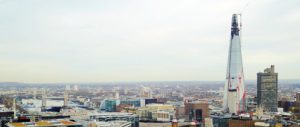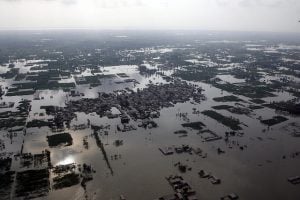Last summer India had the largest power outage in human history, affecting 600 million people. So it stung when my visiting Indian mother-in-law pointed out that the US east coast, including Washington, was "as bad as India". Then it was a so-called derecho storm, which left 6 million US homes without power for days in the searing heat. In October it was Superstorm Sandy, which left 10 million households shivering.
It is hard to pinpoint the date at which Americans developed an Indian – or perhaps British – fatalism about the declining quality of their infrastructure. When my British mother spent several months in the US in the 1950s, it was dazzlingly futuristic. There was air-conditioning, an icebox in every fridge, ubiquitous neon lights and an open road on which even the working class could afford to drive. But bit by bit over the past 30 years, the world’s first truly modern infrastructure has shown its age. It has been starved by a generation of under-investment. And Americans have adapted around it.
At some point in the next 12 months, we will discover whether the US has the will to bring its infrastructure into the 21st century. If all goes well, Congress will take steps to avert a fiscal cliff before 1 January. As part of that deal lawmakers will schedule another ticking time bomb for late 2013, before which they will have to strike a larger bargain or hit another fiscal cliff. The likelihood is that Congress will shrink the already meagre federal investment budget. The hope, as the Brookings Institution Metropolitan Center puts it, is that Congress will "cut to invest" rather than doing so crudely across the board.
Americans unaware how far behind they’ve fallen
There are three reasons to worry. First, there is remarkably little public outrage over the dilapidation in the power grid, public roads, domestic airports and waterways. This means that lawmakers will be feeling stronger pressures in other directions (such as defending the existing low level of capital gains tax, for example, or maintaining job-creating defence budgets). It is hard to fly domestically in the US and not at regular intervals face heavy delays, cancellations or being bumped off your flight. It is also hard not to miss the impressively stoical reaction of most passengers.
A big chunk of US domestic flying woes could be solved by building NextGen, which would switch the US from its second world war radar network to a satellite-based flight-tracking system. The existing arrangement is built on a hub and spoke model, whereby airlines route all traffic via a regional headquarters. Any seize-up in the hub can have a knock-on effect on the entire schedule. NextGen would make flying safer and hub and spokes unnecessary. But Congress has little stomach for the bill, which would come to at least US$25 billion.
Second, most Americans are unaware of how far behind the rest of the world their country has fallen. According to the World Economic Forum’s competitiveness report, US infrastructure ranks below 20th in most of the nine categories, and below 30 for quality of air transport and electricity supply. The US gave birth to the internet – the kind of decentralised network that the US power grid desperately needs. Yet according to the OECD club of mostly rich nations, average US internet speeds are barely a tenth of those in countries such as South Korea and Germany. In an age where the global IT superhighway is no longer a slogan, this is no joke. The budding US entrepreneur can survive gridlocked traffic. But a slow internet can be crippling.
Third, it may be asking too much of Washington in its present state of polarisation to give the green light to an ambitious infrastructure plan. According to the American Society of Civil Engineers, the US needs to spend US$2,200 billion in the next decade simply to maintain the existing quality of infrastructure. Under the current budget, Washington will spend less than half that amount. It requires a leap of faith to assume it will double, say, rather than fall sharply, when the bipartisan fiscal bargain is struck next year – if indeed it is.
In a departure from their party’s traditions, many Republicans are now ideologically opposed to any serious federal role in infrastructure and want to decentralise it to the states. It is thus also a stretch to imagine Congress setting up a public infrastructure bank, as president Barack Obama has requested. The bank would use US$10 billion in seed money to leverage a multiple of that in private money for cross-state projects – much like the European Investment Bank. The chances are it will stay on the drawing board.
Feeling the difference in east Asia
Building bridges, occasionally to nowhere, was once a bipartisan pursuit. As the US heads towards a consequential reckoning with its fiscal future, it is worth stressing that Washington will be aiming to set federal budgetary parameters for many years ahead. Before lawmakers do so, they should take a trip to east Asia – say from JFK to Changi, or Chek Lap Kok, or any number of airports – and feel the difference. Though they would have to ignore the medieval conditions around it, they could even go via New Delhi’s new airport and travel on the city’s air-conditioned new metro system.
My mother-in-law would be delighted to welcome them with a cup of chai masala and some gentle finger-wagging about the US power grid.
Copyright The Financial Times Limited 2012



